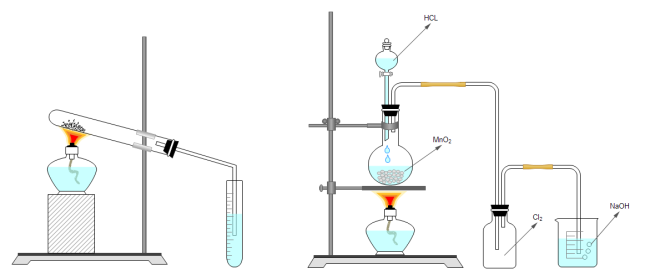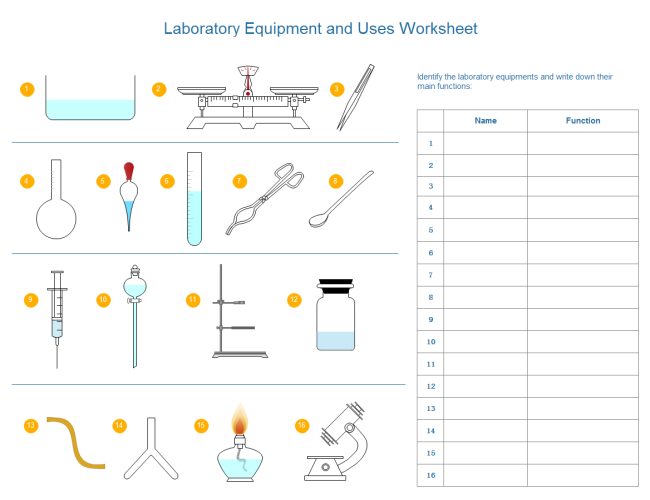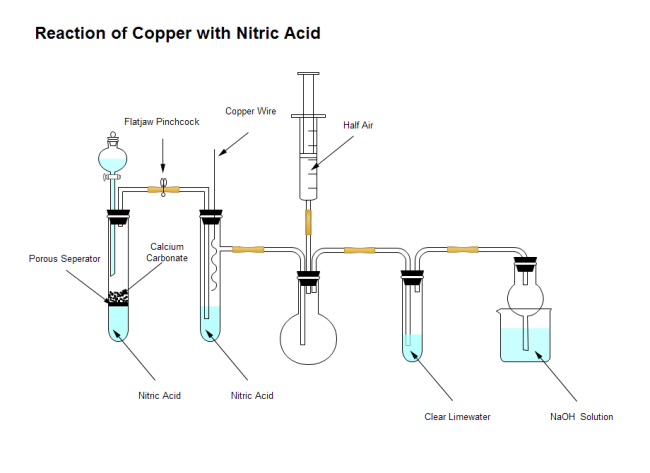Chemical Laboratory Equipment Shapes and Usage
Ready to Design Your Own Laboratory Equipment Diagram?
EdrawMax is the ultimate tool for diagramming and visualization. This guide covers everything you need to know about laboratory equipment and makes it simple to create your own diagrams. Download now and try it for free!
When conducting experiments in the laboratory, particularly in chemistry, you will encounter a wide array of laboratory equipment. From beakers and funnels to various flasks and droppers, each tool has a specific purpose. Before you begin experimenting with chemicals, it's crucial to understand the distinct shapes and functions of these instruments.
Equipment labels help you identify each tool, ensuring you select the right one for your experiment. Misidentification can lead to errors and potentially inaccurate results.
This article provides a list of fundamental laboratory apparatus drawings used in chemistry labs. By the end, you will be able to recognize the most common equipment found in your laboratory.
Eager to create your own laboratory equipment diagram? Click here to get started with a ready-to-use template!
Comprehensive List of Basic Chemistry Lab Equipment
As previously mentioned, essential chemistry lab equipment includes crucibles, funnels, watch glasses, beakers, and flasks. Below is a detailed list of common laboratory tools, their applications, usage guidelines, and their digital representations in diagramming software. (Real equipment images sourced from owlcation.com)
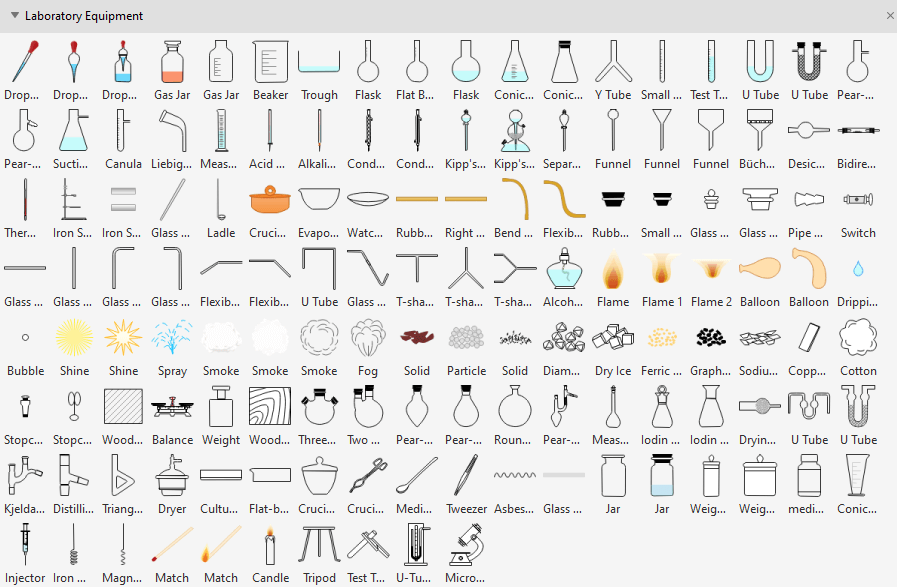
Beakers are cylindrical vessels with a flat base. While used for measuring liquid volume, they are less precise than pipettes and burettes. Unlike flasks, beakers have upright sides. Here’s how they appear:
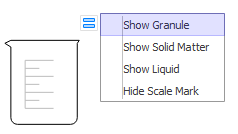
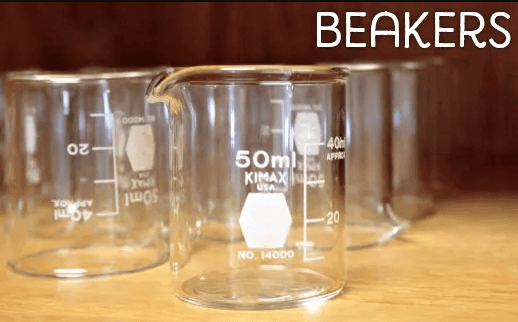
Conical flasks, also known as Erlenmeyer flasks, feature a flat bottom, a conical body, and a cylindrical neck. Their broad base and tapered design minimize spillage during mixing, making them ideal for titrations and chemical reactions. Here’s their typical appearance:
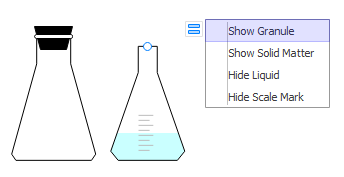
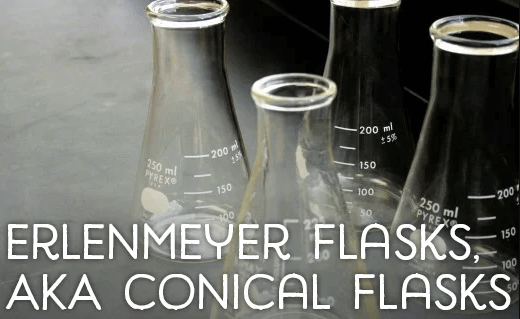
Boiling flasks are spherical with either flat or rounded bottoms. Round-bottom variants require external support to remain upright. Constructed from heat-resistant borosilicate glass, they are designed for heating chemicals safely. Their design is shown below:
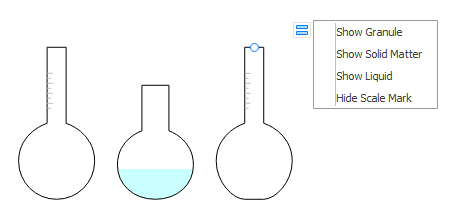
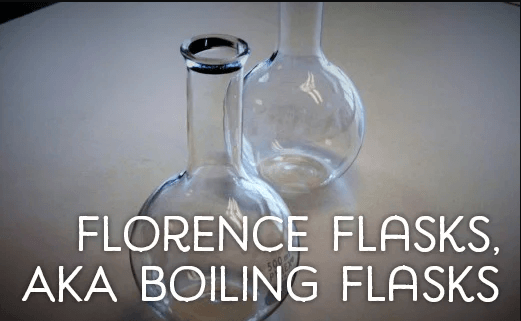
Volumetric flasks are characterized by their spherical body, flat base, and long, narrow neck. They provide highly accurate volume measurements and are often sealed with a cap to prevent evaporation or contamination.
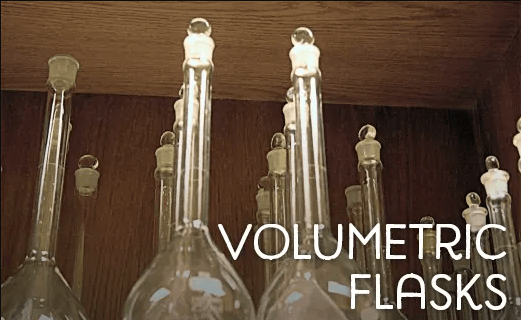
Test tubes, tongs, and racks: Test tubes are slender glass containers used for small-scale mixing, dissolving, and heating. Tongs are essential for handling hot tubes safely, while racks organize multiple tubes securely. Their representations are as follows:
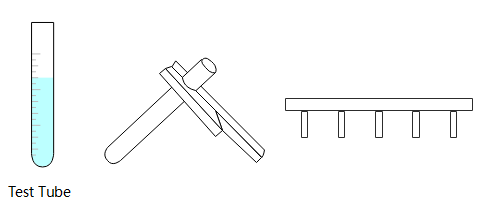
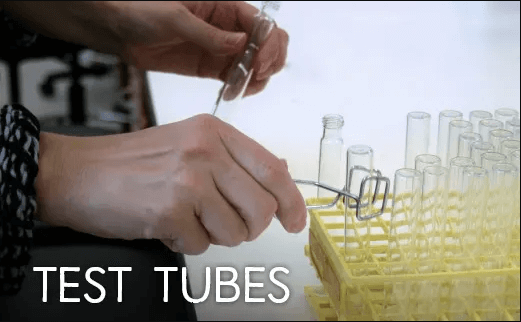
Watch glasses are concave, circular glass dishes used for holding solids, covering beakers, or evaporating solvents to isolate dissolved solids. Their distinctive shape is depicted below:

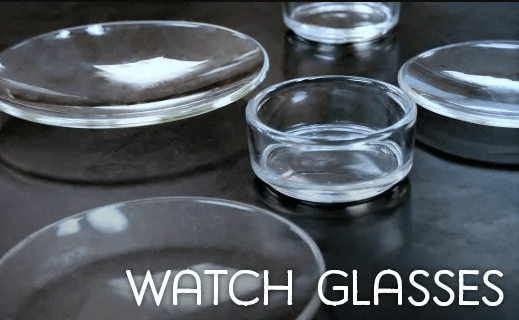
Crucibles are small, cup-like containers typically made from clay or ceramic. They withstand extremely high temperatures, making them suitable for heating substances to the point of combustion or decomposition. Here’s their illustration:
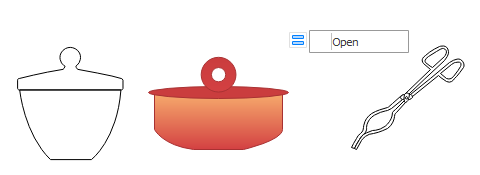
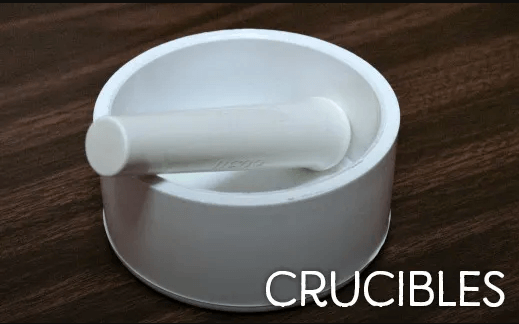
Funnels facilitate the safe transfer of liquids between containers, especially into vessels with narrow openings. Available in various sizes and materials like glass or plastic, they prevent spills and ensure precision. See their design:
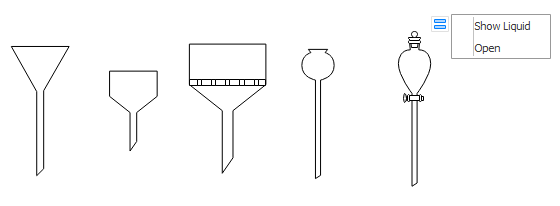
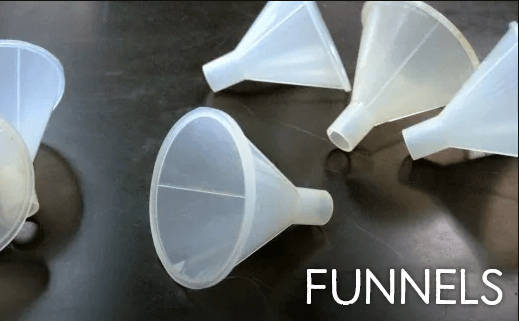
Graduated cylinders are tall, narrow containers used for precise liquid volume measurements. Their slender design offers greater accuracy than beakers, and they feature calibrated markings for exact readings. Identify them by their appearance:
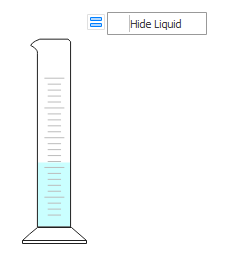
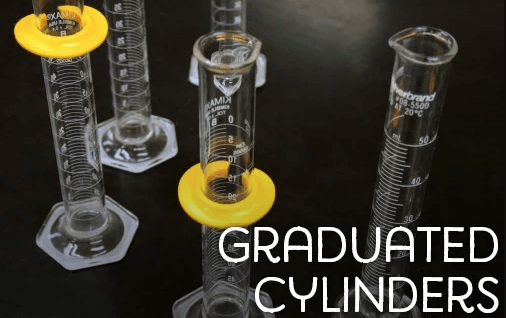
Droppers consist of small glass tubes with a rubber bulb for suction. They are designed to transfer and dispense liquids drop by drop, ideal for precise additions of reagents.
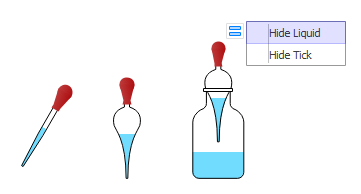
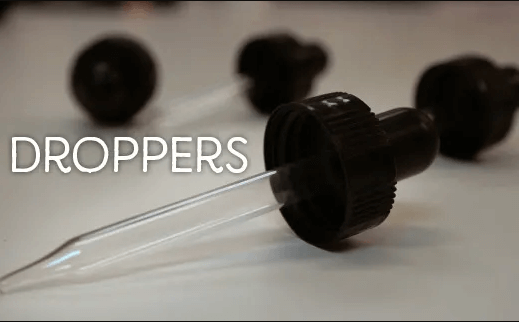
Pipettes are highly accurate tools for measuring and transferring specific volumes of liquid. They exceed the precision of flasks and graduated cylinders and are essential in quantitative analysis.
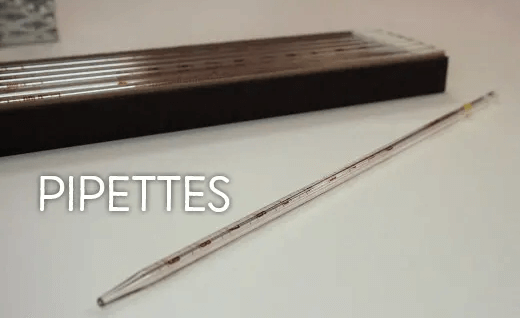
Burettes are long, graduated tubes with a stopcock at the bottom, used to dispense variable and precise volumes of liquid, primarily in titrations. The flow is controlled by adjusting the clamp.
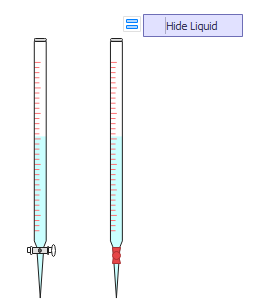
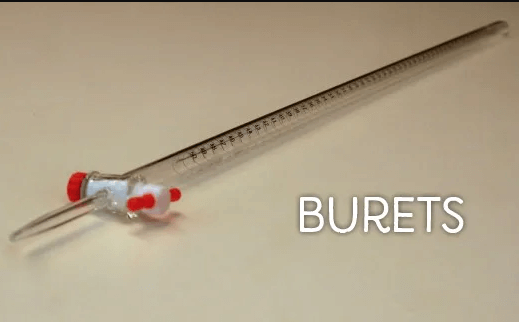
Ring stands, rings, and clamps: Ring stands provide stable support for securing equipment like beakers and flasks, typically above a heat source. Clamps attach to the stand to hold apparatus firmly in place.
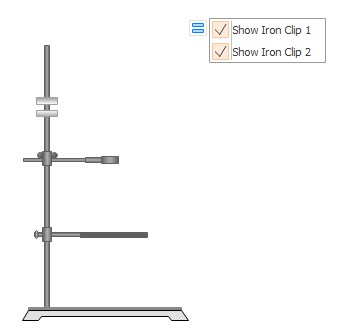
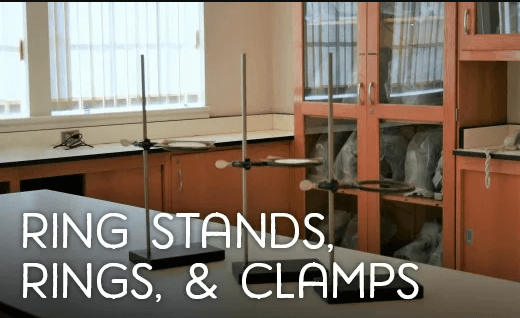
Tongs and forceps are grasping tools for handling hot or hazardous containers. Tongs are suited for larger items like beakers, while forceps provide a finer grip for test tubes and small instruments.
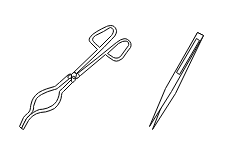
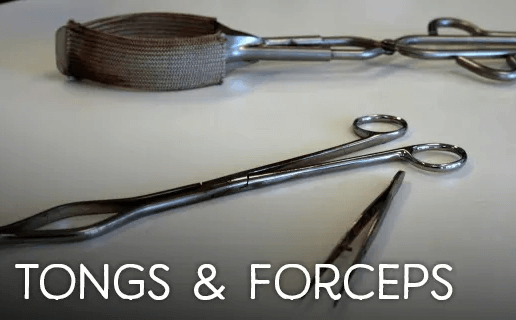
Spatulas and scoopulas are utensils for scooping, transferring, and mixing solid chemicals. They are commonly used to handle powders and crystals before weighing or reaction.
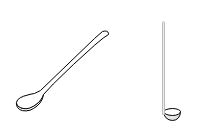
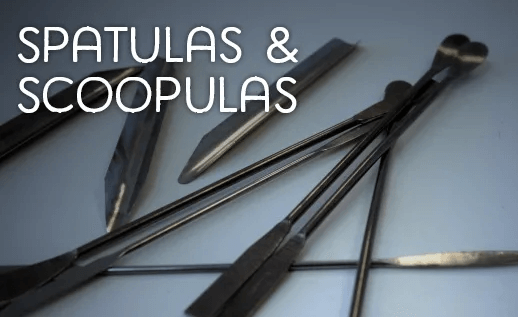
Laboratory thermometers measure the temperature of substances or monitor temperature changes during experiments. They can be traditional mercury-based or modern digital models.
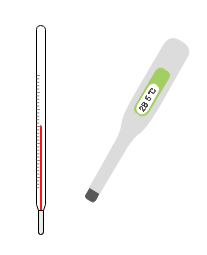
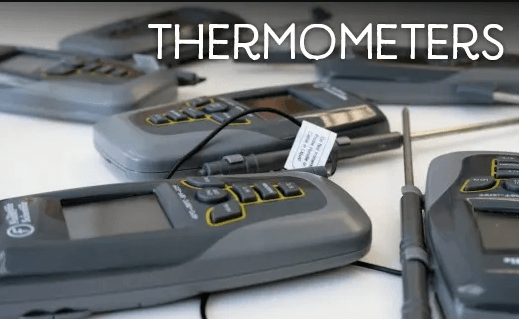
The Bunsen burner is a gas-fueled heat source connected to a gas supply. It features an adjustable air valve to control the flame's intensity and temperature for various heating applications.
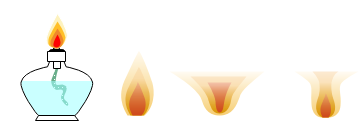
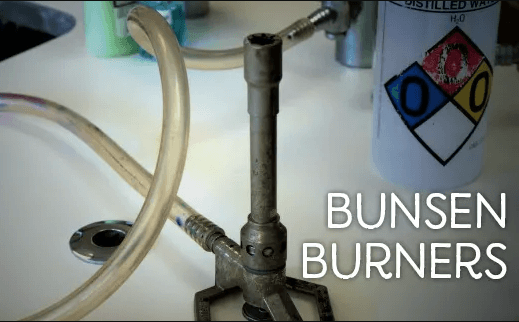
Gas Jar: A simple container used for preparing solutions or storing liquids and gases.
Acid Burette and Alkaline Burette: Specialized burettes designed for handling acidic or alkaline solutions, respectively, to ensure chemical compatibility and accurate dispensing.
Kipp's Apparatus: A historical piece of equipment used to generate a continuous supply of gas by the reaction of a solid with a liquid.
Desiccators: Sealed containers filled with a drying agent (desiccant) like silica gel. They are used to dry chemicals or keep them free from moisture.
Glass rod: A simple but essential tool for stirring mixtures and solutions to ensure homogeneity.
EdrawMax
All-in-One Diagram Software
- Superior file compatibility: Import and export drawings to various file formats, such as Visio
- Cross-platform supported (Windows, Mac, Linux, Web, Android, iOS)
How To Draw Lab Equipment Shapes On Your Computer?
EdrawMax is the ideal solution for creating the laboratory equipment shapes discussed in this article. This powerful software enables you to design new shapes, modify existing ones, or customize pre-installed symbols. It is accessible online or as a downloadable application for Windows and macOS.
EdrawMax also offers a vast library of templates. If you want to start designing lab equipment, you can select a template that closely matches your vision and customize it to your needs. This feature significantly streamlines the design process and saves valuable time.
Follow these steps on EdrawMax to create detailed and professional laboratory apparatus drawings.
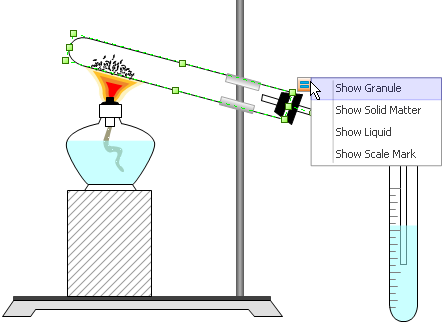
How to Draw Lab Diagrams with These Shapes?
Follow this step-by-step guide to create precise and professional lab diagrams using the shapes introduced above.
Step 1: Download and install EdrawMax.
Step 2: On the home screen, sign in to your Wondershare/Edraw account. New users can quickly sign up using the adjacent link.
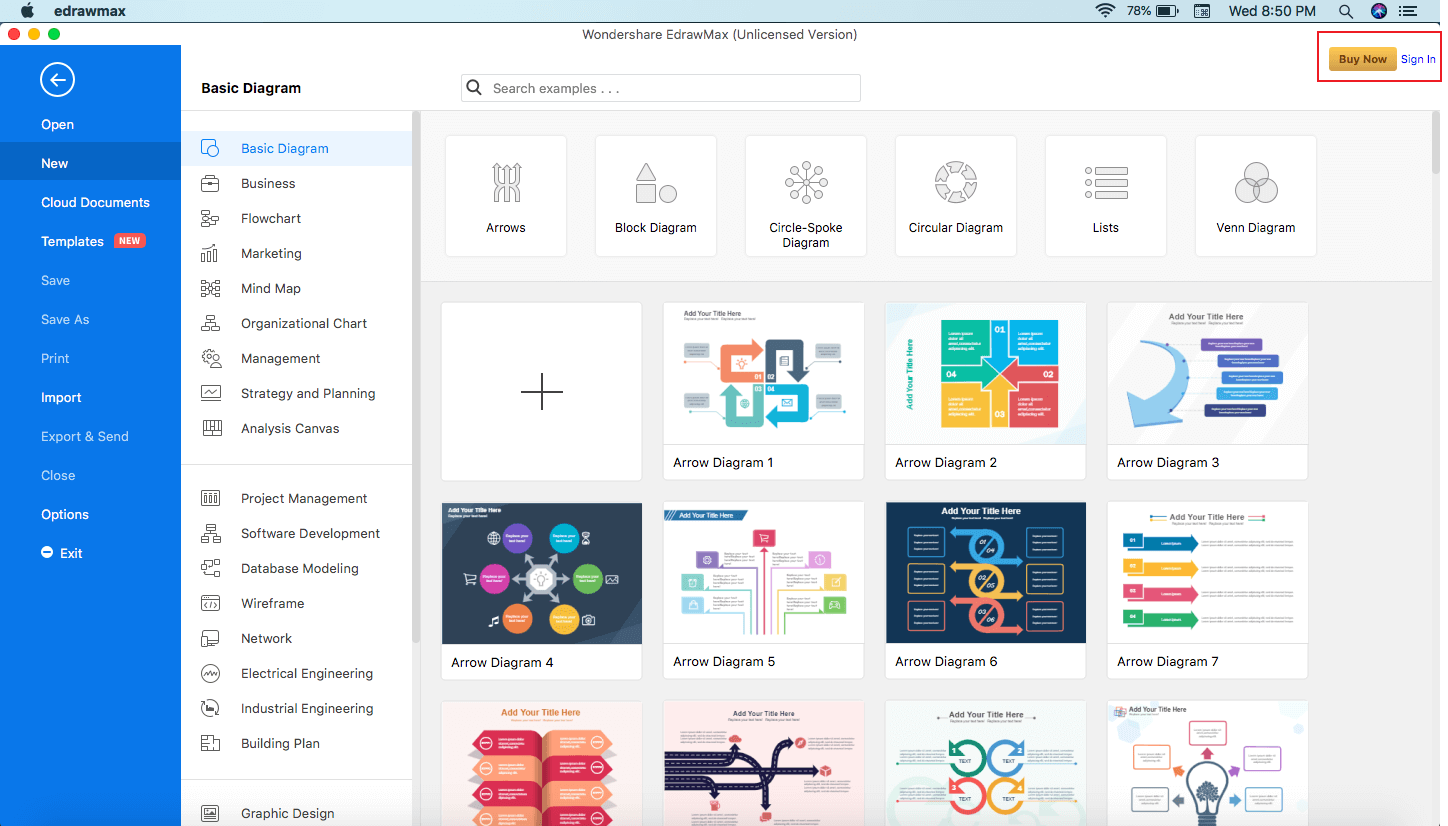
Step 3: To begin a new lab apparatus drawing, navigate to the [New] tab, select [Science and Education], and then choose [Laboratory Equipment]. Here you will find a diverse collection of templates to use as a starting point.
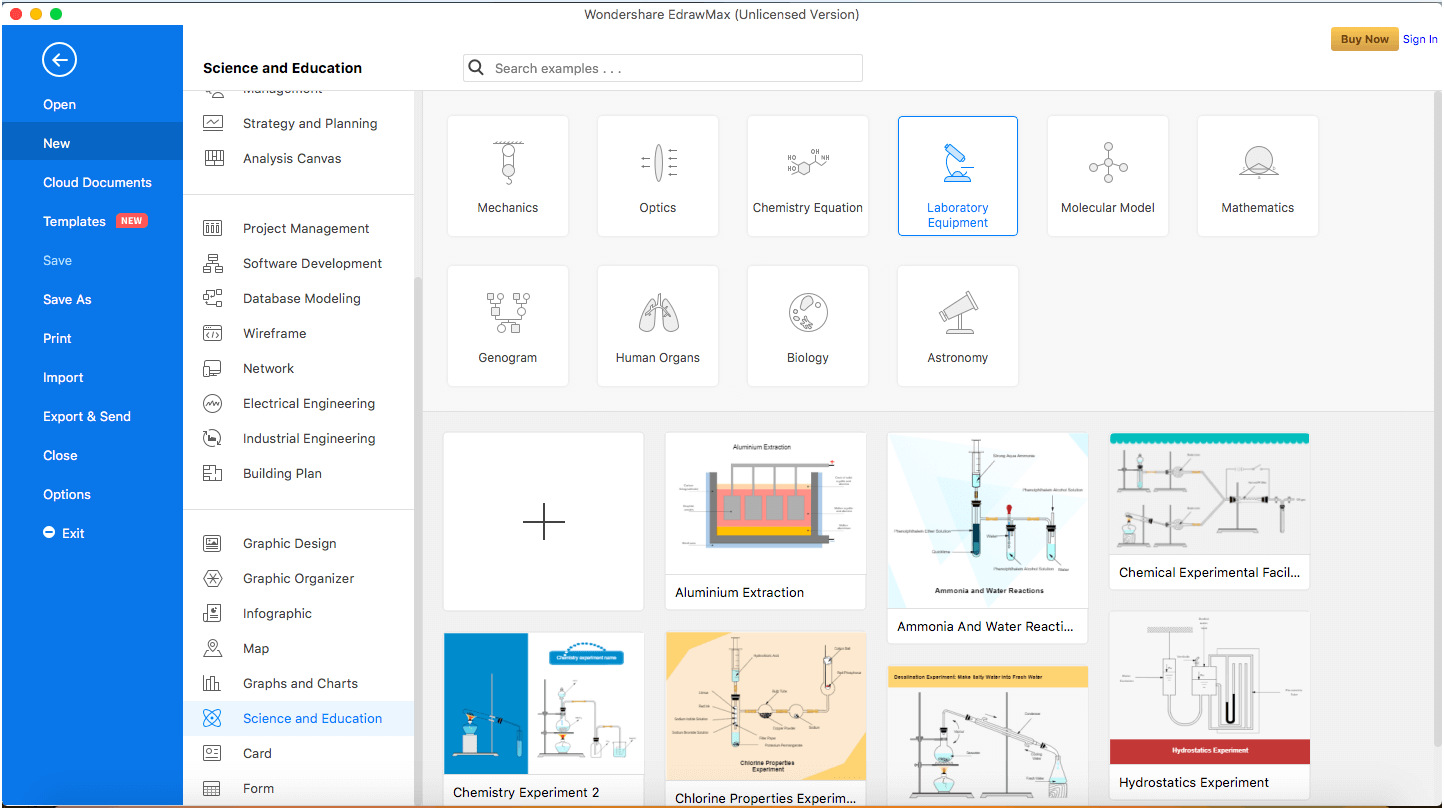
Step 4: To start a completely new diagram from scratch, click the “+” sign shown in the image above. This will open a blank drawing canvas.
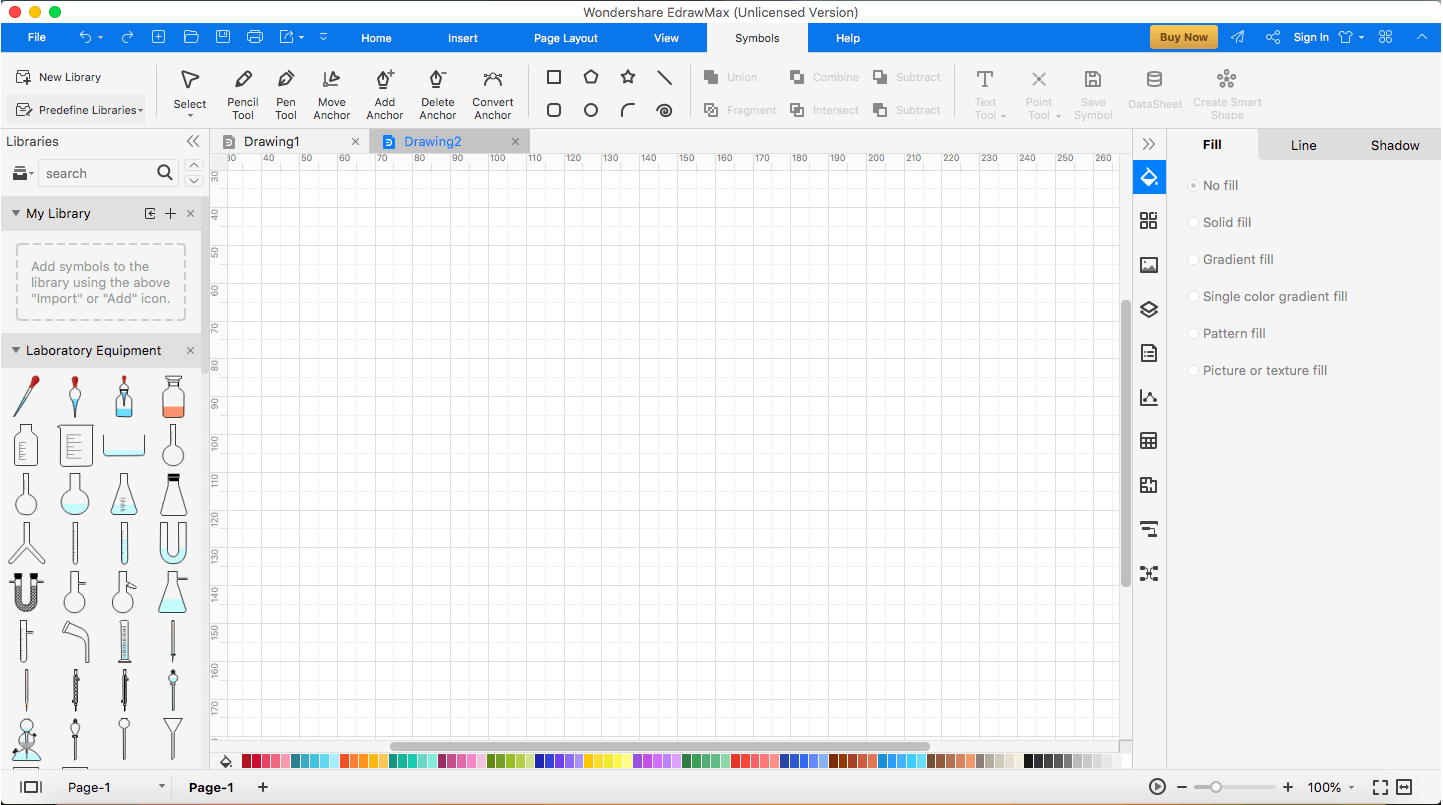
Step 5: To access the shapes and symbols featured in this article, go to [Symbols] > [Predefined Libraries] > [Science] and select [Laboratory Equipment] on your drawing sheet.
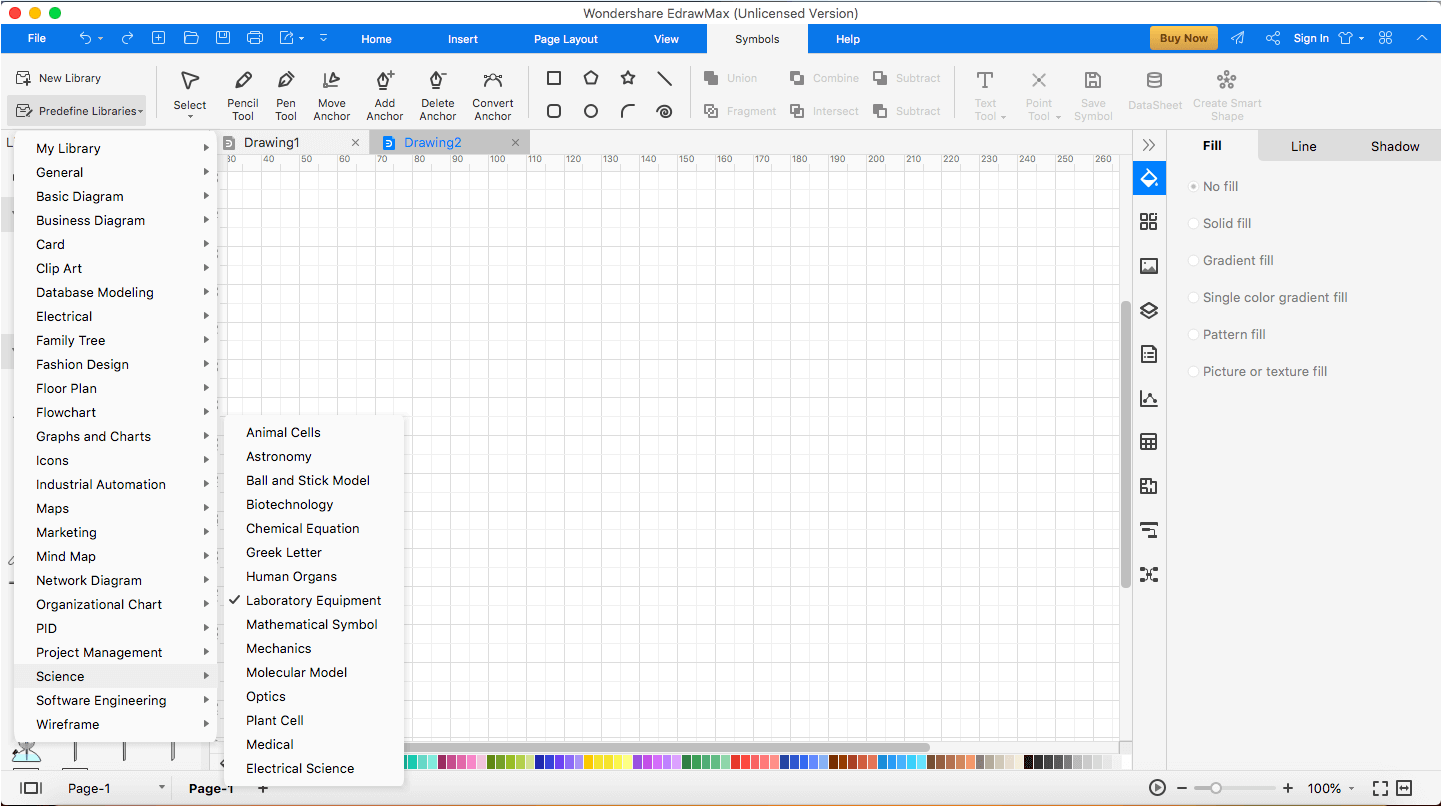
Step 6: Once loaded, you can quickly drag and drop these symbols from the left-side panel onto your canvas to build your diagram.

Using the correct symbols and shapes is paramount in chemistry lab equipment drawings. Even a minor inaccuracy can lead to confusion and potential errors during experimental procedures.
Free Laboratory Equipment Diagram Templates
Explore a variety of ready-to-use laboratory equipment diagram templates. After installing EdrawMax, simply click on your desired template to start using it for free!
To use these templates, click to download them. Eddx files require EdrawMax to open. If you don’t have EdrawMax yet, you can download EdrawMax for free!
Available Templates
Lab Apparatus List Template
Middle School Chemical Experiment Template
Lab Equipment Uses Worksheet Template
Copper and Nitric Acid Reaction Template
Conclusion
With its intuitive interface and powerful features, EdrawMax minimizes errors and maximizes productivity. Download Wondershare's versatile application and experience the difference it makes in your diagramming workflow.



